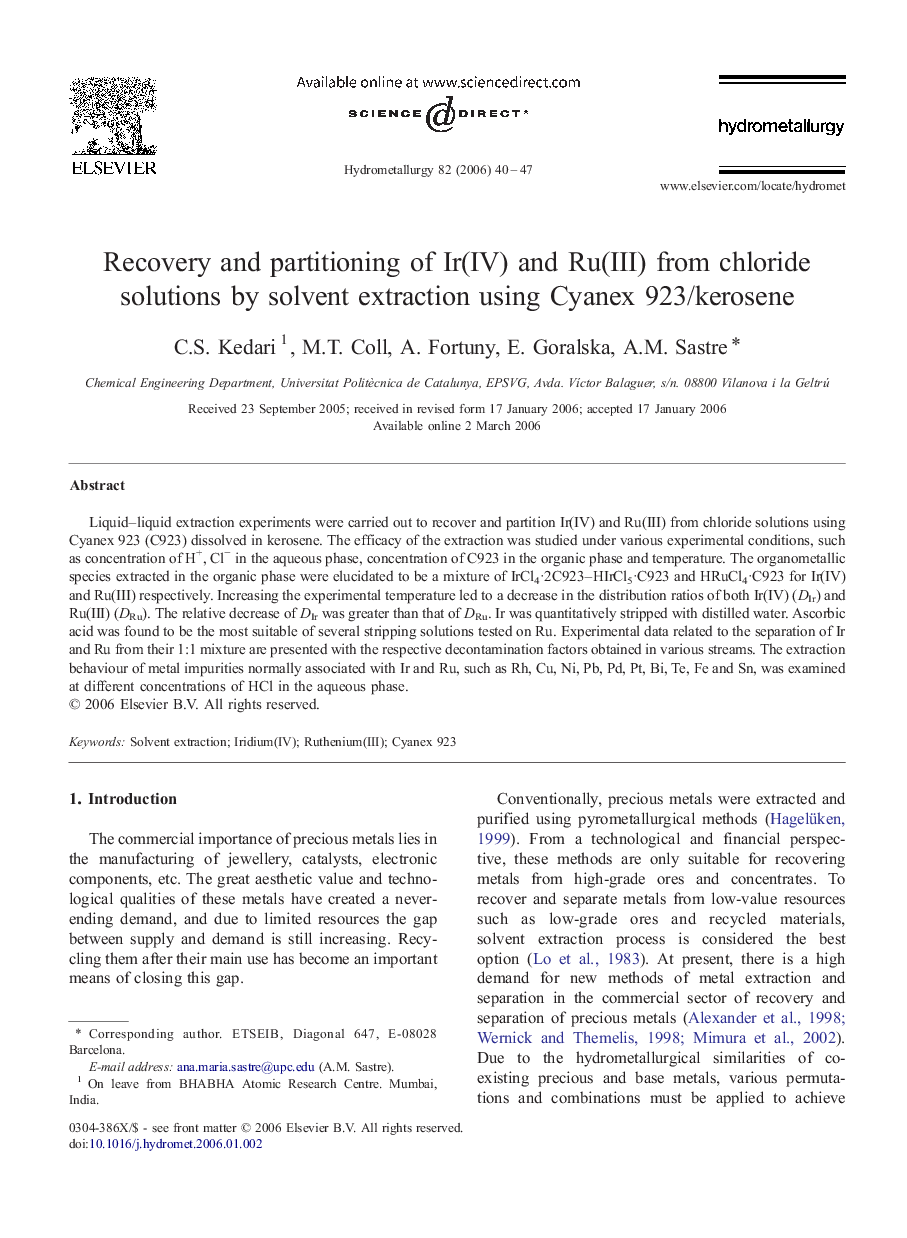| Article ID | Journal | Published Year | Pages | File Type |
|---|---|---|---|---|
| 213539 | Hydrometallurgy | 2006 | 8 Pages |
Liquid–liquid extraction experiments were carried out to recover and partition Ir(IV) and Ru(III) from chloride solutions using Cyanex 923 (C923) dissolved in kerosene. The efficacy of the extraction was studied under various experimental conditions, such as concentration of H+, Cl− in the aqueous phase, concentration of C923 in the organic phase and temperature. The organometallic species extracted in the organic phase were elucidated to be a mixture of IrCl4·2C923–HIrCl5·C923 and HRuCl4·C923 for Ir(IV) and Ru(III) respectively. Increasing the experimental temperature led to a decrease in the distribution ratios of both Ir(IV) (DIr) and Ru(III) (DRu). The relative decrease of DIr was greater than that of DRu. Ir was quantitatively stripped with distilled water. Ascorbic acid was found to be the most suitable of several stripping solutions tested on Ru. Experimental data related to the separation of Ir and Ru from their 1:1 mixture are presented with the respective decontamination factors obtained in various streams. The extraction behaviour of metal impurities normally associated with Ir and Ru, such as Rh, Cu, Ni, Pb, Pd, Pt, Bi, Te, Fe and Sn, was examined at different concentrations of HCl in the aqueous phase.
